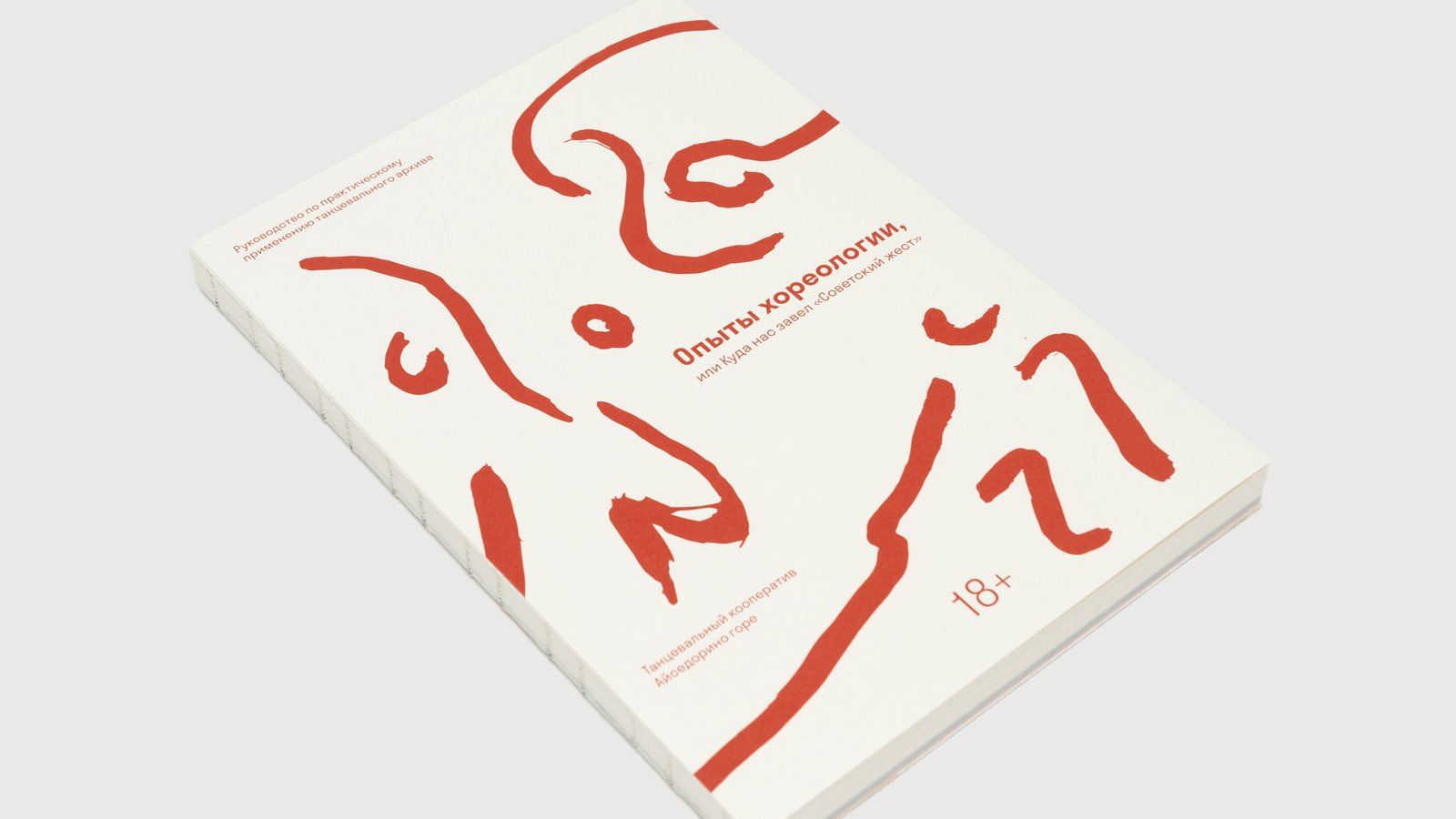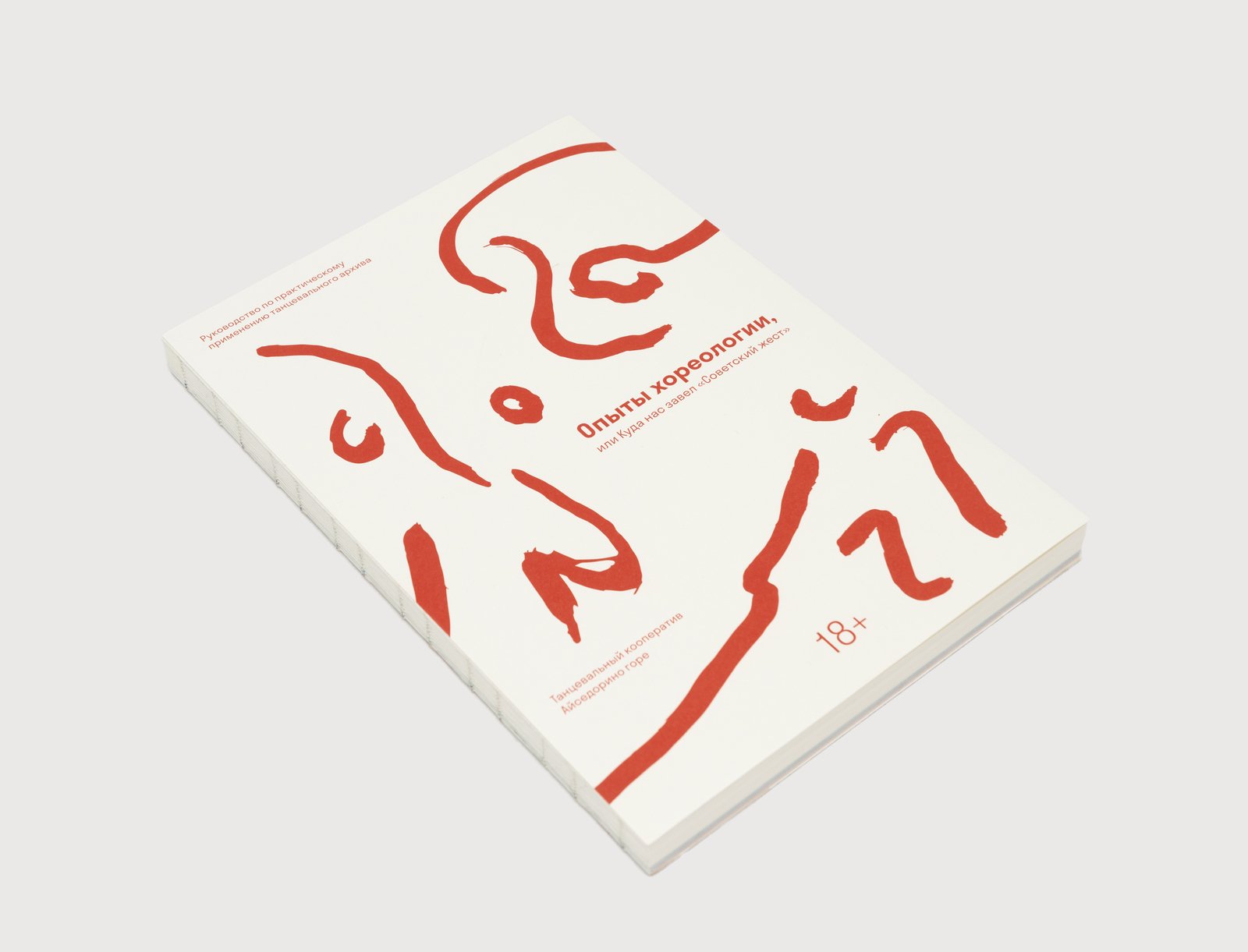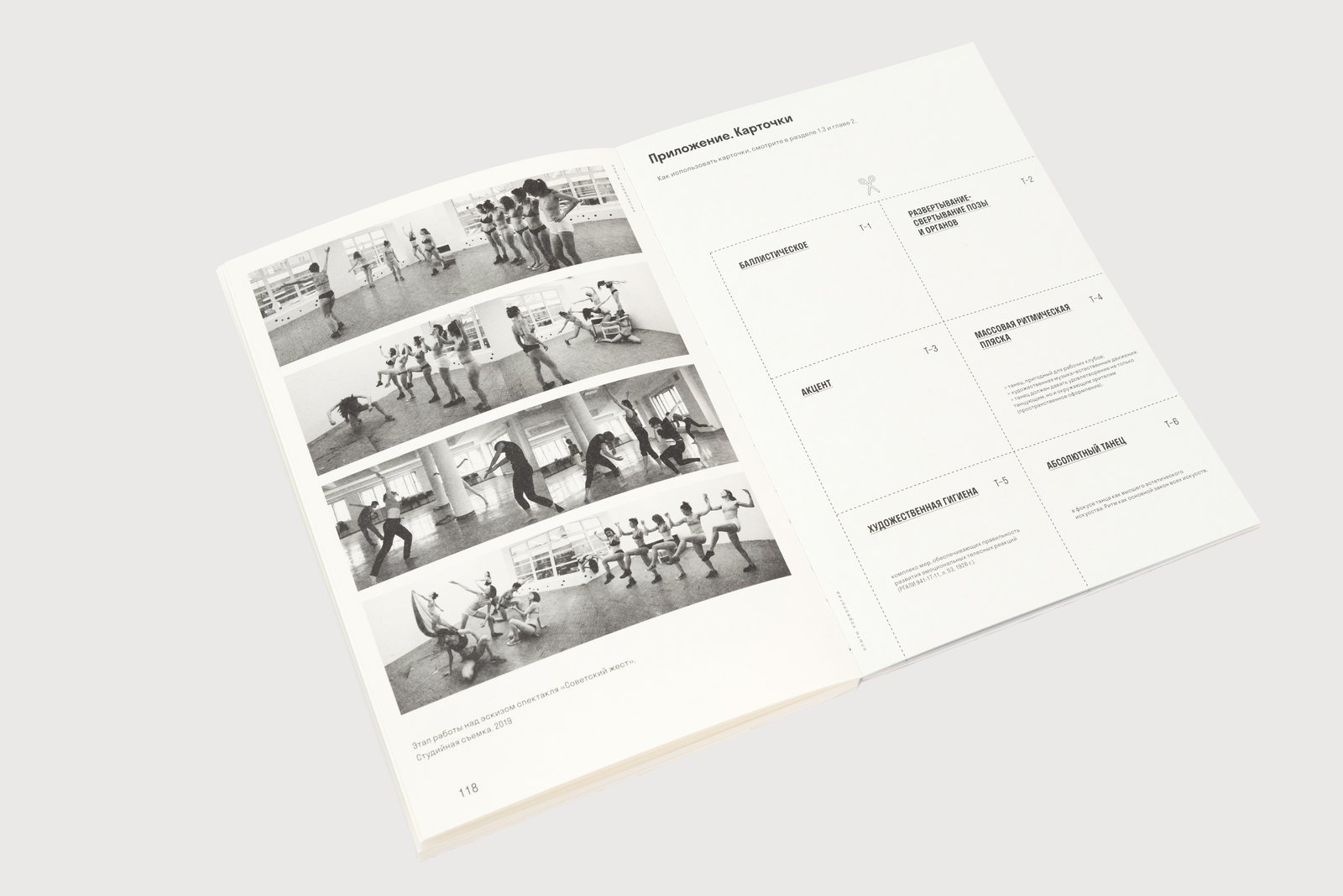Manual for the Practical Use of a Dance Archive: Experiments in Choreology, or Where the Soviet Gesture Has Led Us
We were searching in the text for something that still hypnotizes with its fervor.
Daria Plokhova, Alexandra Portyannikova
Isadorino Gore dance cooperative concludes its field research project with a hybrid publication that comprises both documentation of the laboratory's work and detailed instructions on how to conduct research through dancing.
The Manual for the Practical Use of a Dance Archive: Experiments in Choreology, or Where the Soviet Gesture Has Led Us is “an instruction, a game, an archive, a protocol, a score to perform contemporary dance.” It also operates as a bold proposal for a method to document a dance research process, the dominant component of which is the nonverbal practice of bodily experience of historical concepts and dilemmas. As part of the Garage Field Research program, Isadorino Gore dance cooperative ran a three-month laboratory entitled Experiments in Choreology, aiming to find answers to the following questions: What kind of physicality did the “new dance” practices shape? How did they evolve? How did they disappear? Do Soviet ideas of the physicality of the “new man,” modeled from above, continue to influence the sensing mechanisms of authors and viewers operating in the post-Soviet space?

Isadorino Gore dance cooperative, 2014
Photo: Ekaterina Sochilina
Isadorino Gore dance cooperative archive
While studying archive documents of the State Academy of Artistic Science’s Choreology Laboratory (1922–1930), the artists extracted ambiguous, puzzling, and intriguing definitions, themes, and exercises that resonated with them (e.g. “standing position on a figured point,” “plastic treatment of hands,” “step of figured complexity”) and which they asked laboratory participants to reflect upon and (re)interpret. The dancers and performers were selected through an open call and acted based on their personal experience. For some, the choreological maxims were a bizarre novelty, provoking further experimentation; for others, they were like recognizable, long-forgotten knowledge. It is this shared—and at the same time individualized—living through fragments of historical knowledge, accumulated into a whole through group discussions of the laboratory's work, that formed the basis of the Manual. (The reasons why Isadorino Gore cooperative advocates Colta.ru such group decolonization of imagination can be found in the article “The Ethical Rationale of the Project Soviet Gesture,” published in Russian on Colta.ru.)
.jpg)
Isadorino Gore dance cooperative
Reflecting on the Dimensions of Post-Soviet Identity in Oneself, 2015
Performance documentation
Photo: Ekaterina Pomelova
Isadorino Gore dance cooperative archive
The the Manual's structure embeds a specific dramaturgy, being deliberately redundant and generous. Here's how the authors describe their idea: “We share our toolbox and encourage you to practice, first together with us, then independently. The Manual begins with theoretical texts, continues with descriptions of our own practices, and ends with the publication of documents, the potential of which seemed so powerful to us that we decided to leave them without comments, aiming to reduce our influence on the experimenter's flight of fancy and expand the range of independent interpretations. Invent your own methods and meanings that will inspire you and stimulate your practice!”
In Russian art, such enthusiasm is often considered a manifestation of anti-intellectualism, but it is obvious that in a series of ongoing searches for a formula of post-Soviet identity, the process of discovering commonality/difference through practice, through the involvement of artistic action in the laboratory’s production, is an effective method.
In addition, in being more intuitive (due to a reliance on bodily reactions) or more truthful, dance studies can bring more freedom to the very notion of “artistic research.”

Isadorino Gore dance cooperative
Still from video notes from the dance laboratory Experiments in Choreology, Meeting 7, October 23, 2019
17’ 1”
Video: Tatyana Yegorova
By implementing the project within the narrow framework of our personal, pragmatic (for the sake of completing the production Soviet Gesture) interest in a phenomenon of avant-garde choreography, and leaving aside major narratives around the Soviet discourse, such as Bojana Csvejic’s book Public Sphere by Performance, Isadorino Gore begins to modify the position of contemporary dance within Russian contemporary art, endowing dance with research agency and expert weight.
Anastasia Mityushina
Curator of the Field Research project Soviet Gesture
“Unpublished” self-study materials are an important part of the Manual:
Experiment conducted by the Experiments in Choreology laboratory




